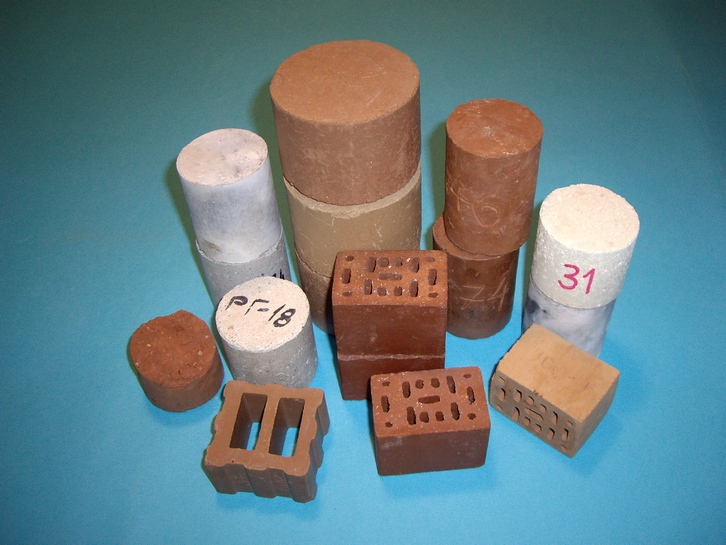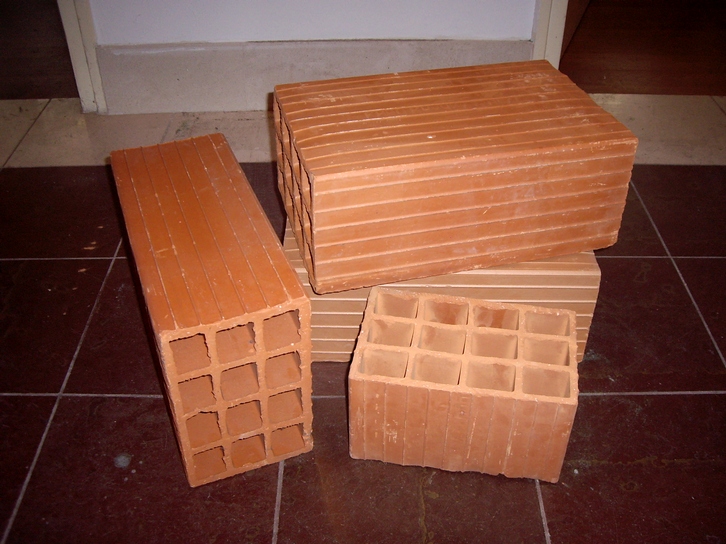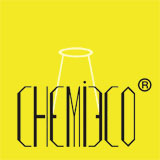Procedure for production of brick products with addition of silicone preparation
Introduction
Modern production of brick products uses crude oil and natural gas as energy. At this time the price of brick products is at least by 60% determined by the energy, only considering the energy used for baking and drying of these products. Future tendency of the energy price increase is quite certain, and consequently so is the price increase of brick products.
Laboratory testing
The project began with laboratory testing in 1992. Various types of clay were used for the production of samples, which were later on dried and baked in laboratory conditions. Besides clay, different types of soil from Serbia and the region, loess, quartz and regular (river) sand, tailings, as well as the mixtures of these raw materials were used for the production of samples. Laboratory testing, carried out in the period 1993 – 2004, included several phases:
- Samples made of different types of clay with the addition of silicone preparation baked at standard temperature for a standard period of time.
- Samples made of mixtures of clay and other raw materials with the addition of silicone preparation baked at standard temperature for a standard period of time.
- Samples made of clay and clay mixtures and other raw materials with the addition of silicone preparation baked for a standard period of time at temperatures lower than a standard one.
- Samples made of clay, clay mixtures and other raw materials, as well as mixtures of other raw materials without clay, with the addition of silicone preparation baked at standard temperature for a shortened period of time.
Testing was very extensive: more than 20,000 samples with various compositions were made. The best results were achieved in the last two phases of testing during which the energy used for drying and baking was saved by around 50%.
 Picture 1. Laboratory samples
Picture 1. Laboratory samples
Industrial examination – industrial tests
In the period 2006 – 2007 two industrial tests were done. The first industrial test was done in the plant IGM ‘Opeka’, LLC Berane, The Republic of Montenegro, the second one in the brickyard ‘Kiro Kucuk’ SC Veles, FYR Macedonia.
Both industrial tests were completely successful and they confirmed excellent results achieved by previous laboratory testing. From a technological point of view, both tests are almost identical and produced a technological solution for the application of this patent. Industrial tests produced over 40,000 brick blocks that were placed on the market at the end of testing.
 Picture 2. Brick blocks produced during industrial tests in the brickyard ‘Kiro Kucuk’ SC Veles, FYR Macedonia 2007
Picture 2. Brick blocks produced during industrial tests in the brickyard ‘Kiro Kucuk’ SC Veles, FYR Macedonia 2007
The addition of silicone preparation named Caloxan (cal – mud, mire; oxans – a group of compounds with oxygen) in the amount of 3%wt in the clay (soil) before baking the following results are achieved:
- Baking time is shortened by 50% (proven by industrial tests),
- Drying time is shortened by 20% (proven by industrial tests),
- We suppose that the drying time can be shortened by 50% (proven by laboratory tests, industrial test did not include these examinations),
- The quantity of raw (wet) rejects (debris) is reduced from 4% to less than 1% (proven by industrial test),
- The quantity of dry rejects (debris) is reduced from 9% to less than 1% (proven by industrial test).
In other words:
- The capacity of brickyard increases by around 100%. Precisely, if a brickyard used to produce annually, for example 1,000,000 pieces of a unit, by using this technology it will produce 2,000,000 pieces annually with:
- the same energy consumption,
- the same labor force,
- The emissions of CO2 (carbon dioxide), one of greenhouse gases, and of SO2 (sulphur dioxide) are reduced by at least 50%, which is very important from the point of environmental protection.
- The result is the product, which entirely meets the standards, with higher or the same quality as the products with the same purpose produced by standard method.
- The result is the product with a significantly lower price.
- A considerable amount of time in the production procedure is being saved.
The one novelty in the technological procedure of making brick products represents the system for dosing the silicone preparation Caloxan.
Project in development
Technological possibilities are not completely examined. Our previous findings show that the addition of the silicone preparation Caloxan, in the amount of 3% wt, placed in clay, can produce the brick with 75,0MPa breaking force. The breaking force of the brick produced using classical method is usually 3,5-12,0MPa.
Due to the lack of resources Hemi Eco Company is currently unable to apply this patent and initiate its own industrial production of brick products.
Selling the patent is the most convenient for us. Other possibilities of cooperation with domestic and foreign partners are not excluded.
Documents
IGM ‘Opeka’, LLC Berane
‘Kiro Kucuk’ SC Veles, FYR Macedonia
Civil Engineering Institute ‘Macedonia’ - Skopje report
Brickyard ‘Kiro Kucuk’ SC Veles study
Download English translation of the study in MS Word format (.doc)
Download English translation of the study in Adobe Reader format (.pdf)























